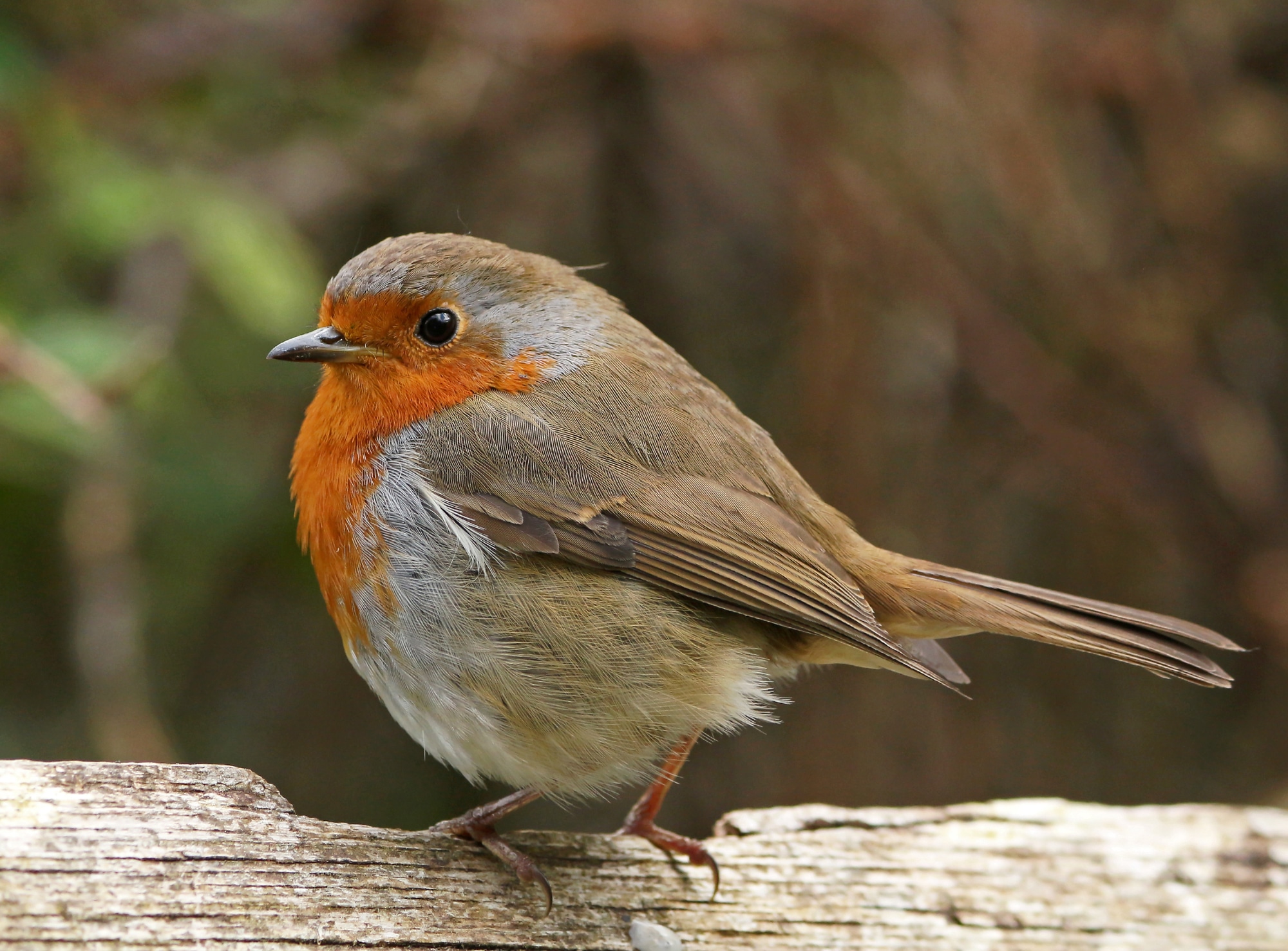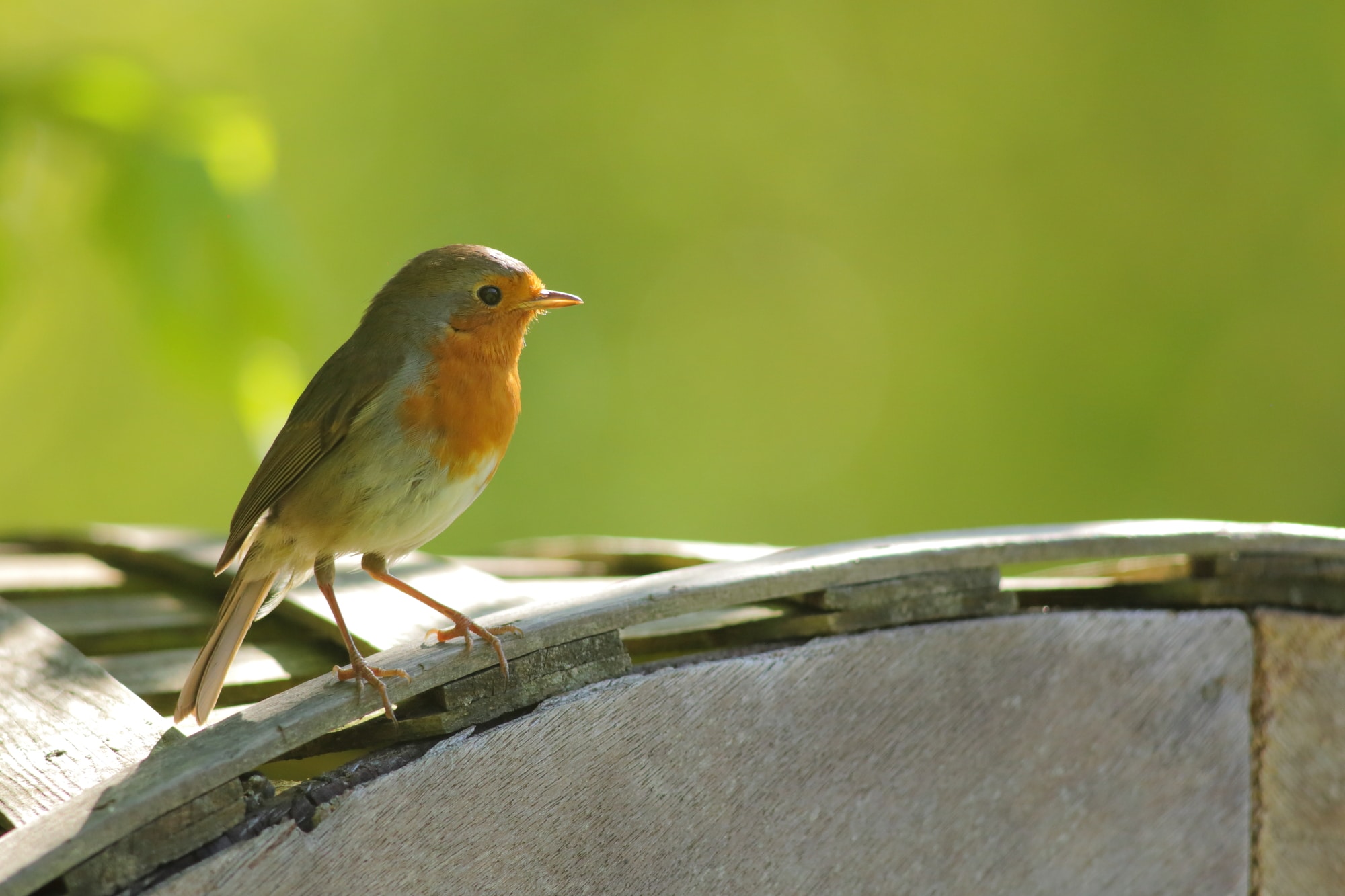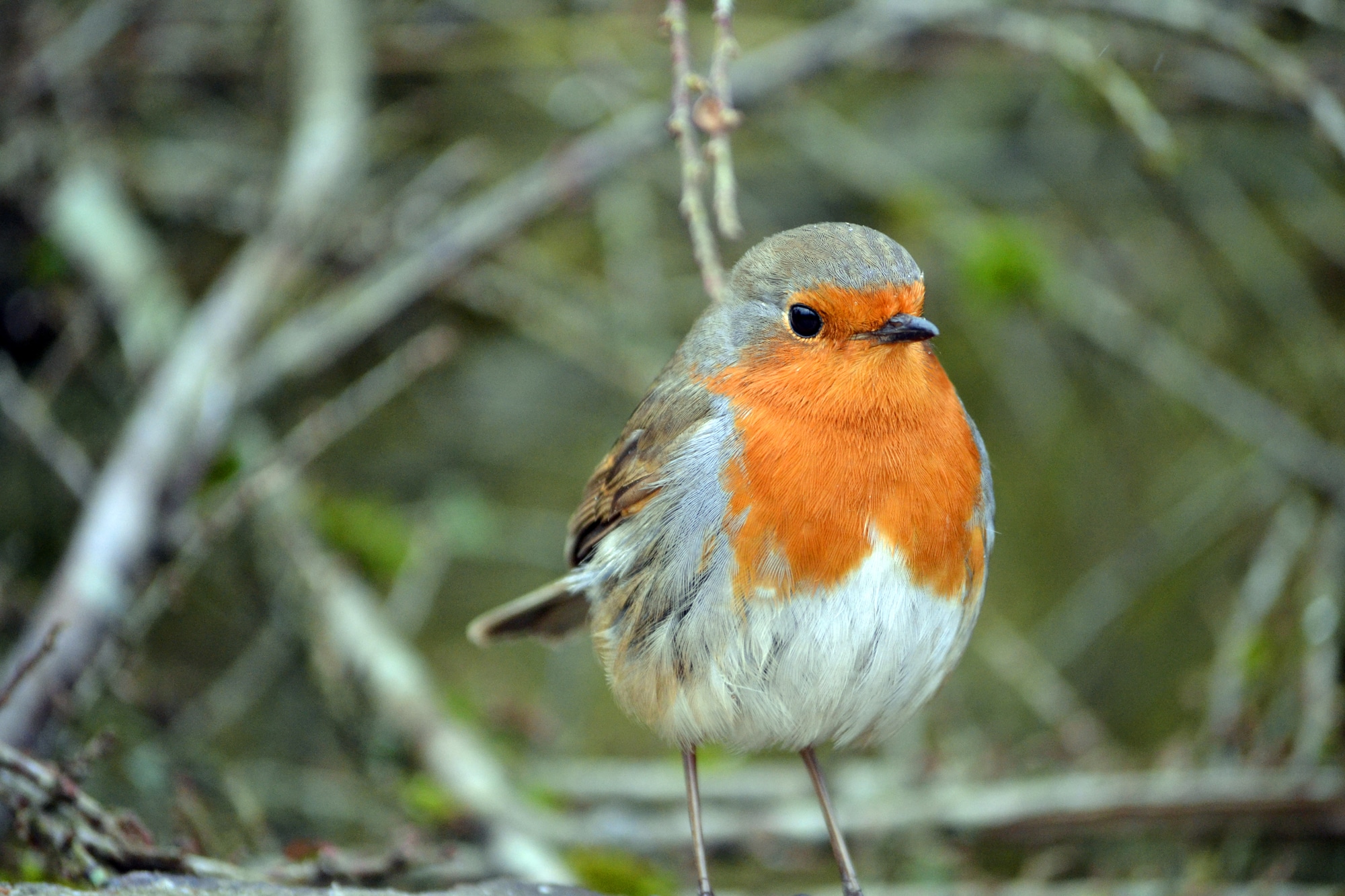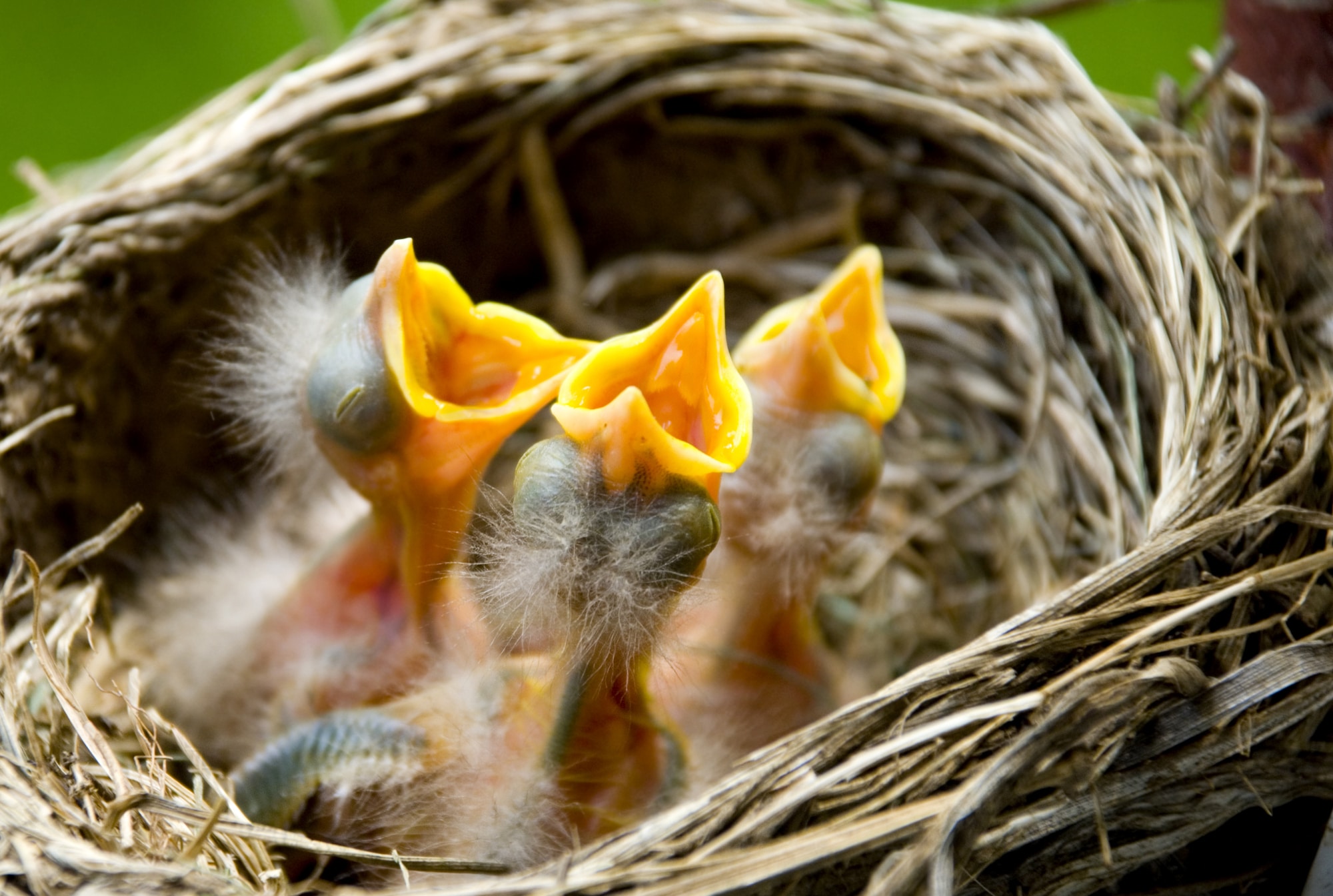The European robin (Erithacus rubecula) is a small, charming garden bird, and males and females are almost identical in shape and colour. They are one of the most beloved and common birds in the UK, frequently seen throughout England, especially in gardens and the countryside.
While male and female robins are very similar, there are some subtle differences that can sometimes help to distinguish them. In this article, female robins will be specifically discussed, including their characteristics, behaviour, and any slight variations from their male counterparts.
What Does a Female Robin Look Like?
A common question asked is, “Do female robins have a red breast?”
Yes, female robins, like males, have a bright reddish-orange breast, complemented by a white belly and brown back. This vibrant red breast is a defining feature of the species, and there is no significant difference between males and females in this regard.
Physically, female robins are almost indistinguishable from males. Both sexes share the same general plumage, but females may occasionally appear slightly smaller. However, this size difference is very subtle and not a reliable way to tell them apart.
It is worth noting that juvenile robins look different from adults. Young robins lack the distinctive red breast and instead have mottled brown plumage, which provides better camouflage while they are vulnerable.

The Difference Between Male and Female Robins
Distinguishing male and female robins is a challenging task. Unlike some bird species where males have more elaborate plumage, European robins do not exhibit such sexual dimorphism. The coloration of their red breast, brown back, and white belly is nearly identical in both sexes.
In some cases, minor behavioral and physical differences might help differentiate them:
- Behaviour: During the breeding season, males are often more vocal and territorial, singing loudly to establish and defend their territory. Females sing less frequently but may still be heard.
- Size: Females may be slightly smaller than males, but this difference is minimal.
However, these distinctions are not always noticeable without close observation

Do Male Robins Change Colour?
Neither male nor female robins undergo significant changes in plumage colour during the mating season. Their bright red breast remains constant throughout the year and serves as a key feature for both sexes.
Female Robin Song
Both male and female robins sing, but males are more prolific singers, especially during the breeding season. Male songs are melodic and often used to assert territorial dominance, while females’ songs are less frequent but still sweet and melodic. Both sexes use chirps and whistles for communication.

Behaviour Of Female Robins
Female robins are fiercely territorial, much like their male counterparts. During the breeding season, they can often be seen perched in trees or bushes, keeping watch for predators such as cats or foxes. Females are particularly active during nesting, selecting and preparing sites to lay eggs.
Mating Period Of Female Robins
The mating season for robins typically lasts from March to May. Once paired, robins may remain together for the duration of the breeding season, but they do not form lifelong bonds. They often seek new mates in subsequent seasons.
Female robins build their nests in sheltered spots such as tree stems, hedgerows, or crevices in walls. They create small, cup-shaped nests out of grass, moss, and twigs, lining them with feathers for insulation. During the breeding season, females usually lay 3-5 eggs, which are pale cream with reddish-brown speckles. They incubate the eggs while the male provides food and protection.

Where Can You See Them?
European robins are widespread across the United Kingdom and are particularly common in England. They thrive in various habitats, including gardens, parks, woodlands, and countryside areas. Robins are year-round residents and can often be seen flitting about or feeding their young during spring and summer.
Conclusion
The European robin is a beloved and familiar sight across the UK, admired for its vibrant red breast and cheerful song. Male and female robins are virtually identical, making them difficult to distinguish without close observation. Their fascinating behaviours, especially during the breeding season, make them a joy to observe in gardens and natural habitats alike.
Sources and References
- How Can You Tell Male and Female Robins Apart? – birdspot.co.uk
- Robin Identification, Habitat & Nesting Habits – arkwildlife.co.uk
Sam loves to learn about animals and their habitats. He has been a nature lover from a very young age, and has been writing papers and articles about wildlife for as long as he can remember.

I love robins, this is very interesting info, tbankyou.
We have a robin outside our window. When not there I whistle, and it comes. It keeps flying towards our window and worried it might get hurt. Do you think it sees its reflection?
Hi Susan.
Sadly, yes, birds of all types, including robins, are prone to colliding with glass as they cannot always see their reflection.
Your Robin may see you through the window/ at the sink and may also follow you in the garden; this will probably be a male, as they are territorial and may now have a partner. You can train your Robin to feed from your hand…when he is near, start with some mealworms in a dish and stand a few feet away, next time hold a few in your hand – you will see him hesitate at first. During the spring, the male will feed the female/courtship. The male can be bigger, and the crown/head markings can be different female V, Male U, but all of this can be close, as can colour.
I have had a Robin come into the kitchen and sit on the tap or sit on my shoulder, just need to be aware, and the nest will be near. Hence they will arrive as soon as you go into the garden.
Is shredded cheese good food for robins?
Yes, mild, grated cheese is fine for robins.
Wow I have learned so much, I live at the side of a national nature reserve and I look forward to every morning when me and my little old dog go for a walk, but today seemed different as I was really surprised how many robins I managed to see and hear! I was over the moon with a beaming smile and full of joy the tree’s were alive with birds singing and I could hear the robins over all the other different species of birds . It made my day so much happier 🤗
That sounds amazing! There’s nothing quite like starting your day with a stroll through nature, especially when you’re greeted by a chorus of robins serenading you from the trees. It’s like they’re saying, “Good morning, world!” in their own cheerful way. Moments like these really do light up our days and fill us with happiness. Here’s to many more mornings filled with the joyful tunes of our feathered friends!